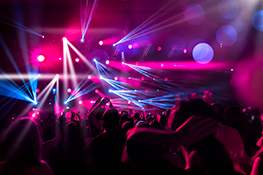Profile Lights vs. Fresnels: A Detailed Comparison for Stage Lighting Professionals
By the Stagelights.in Team
Introduction: Choosing the Right Tool for the Job
Selecting the appropriate lighting instrument is crucial for any successful stage production. Two fixtures frequently debated among lighting professionals are the Profile and the Fresnel. Both offer distinct advantages, making the choice heavily reliant on the specific needs of the show and the desired effect. This detailed comparison will explore the key differences between Profile and Fresnel lights, guiding you towards informed decision-making.
Understanding Profile Lights: Precision and Control
Profile lights, often referred to as ellipsoidal reflectors, are known for their sharp, controlled beams. This precision is achieved through the use of shutters, gobos (metal templates creating patterns), and a rotating barrel for focusing.
Key Features of Profile Lights:
- Sharp, Defined Beam: Ideal for highlighting specific areas or actors.
- Shutters: Allow for precise shaping of the beam, creating hard edges and eliminating light spill.
- Gobo Holders: Enable the projection of patterns, logos, or textures onto the stage.
- Rotating Barrel: Offers adjustable focus, allowing for control over beam size and intensity.
- Color Scrolling Capabilities (in many models): Facilitates dynamic color changes.
Understanding Fresnel Lights: Soft, Even Illumination
Fresnel lights, characterized by their soft-edged beam, are often used for broader washes of light. The lens, designed with concentric rings, creates a smooth, even illumination that is easily blended with other light sources.
Key Features of Fresnel Lights:
- Soft-Edged Beam: Creates a gentle, diffused light, perfect for creating ambiance and washing large areas.
- Easy Focusing: Simple adjustment of the lens allows for a smooth transition between flood and spot.
- Versatile Applications: Suitable for backlighting, uplighting, or washing cycloramas.
- Cost-Effective Option: Generally less expensive than profile lights.
Head-to-Head Comparison: Profile vs. Fresnel
| Feature | Profile Light | Fresnel Light |
|—————–|——————————————–|———————————————-|
| Beam Quality | Sharp, defined edges | Soft, diffused edges |
| Beam Control | High (shutters, gobos, rotating barrel) | Moderate (focus adjustment) |
| Applications | Spotlighting, gobo projection, special effects | Wash lighting, backlighting, general illumination |
| Cost | Generally higher | Generally lower |
| Complexity | More complex to operate | Easier to operate |
| Color Mixing | Often better color mixing capabilities | Typically less sophisticated color mixing |
Choosing the Right Light for Your Production
The ideal choice between a Profile and a Fresnel depends heavily on your production’s demands.
Consider Profile Lights if:
- Precise beam control is paramount.
- Gobo projection is required.
- You need sharp, well-defined lighting effects.
- Budget allows for a higher investment.
Consider Fresnel Lights if:
- Soft, even illumination is desired.
- You need a cost-effective solution.
- Simplicity of operation is a priority.
- The production requires broad washes of light.
Conclusion: Maximizing Your Lighting Arsenal
Both Profile and Fresnel lights are valuable tools in a stage lighting professional’s arsenal. Understanding their distinct characteristics enables you to make informed choices, leading to more effective and impactful lighting designs. By carefully considering the needs of your production, you can utilize both types of fixtures to create a dynamic and visually stunning theatrical experience. Remember to always consult with lighting designers and technicians for optimal results.


 Auditorium Construction Services
Auditorium Construction Services 